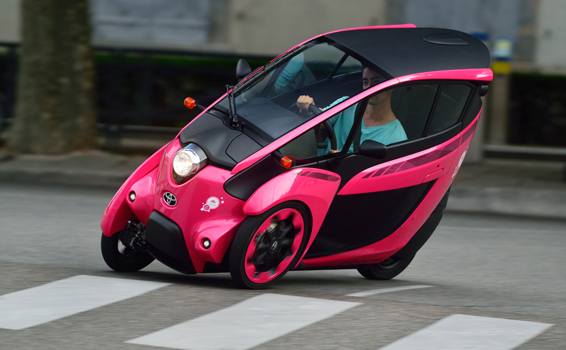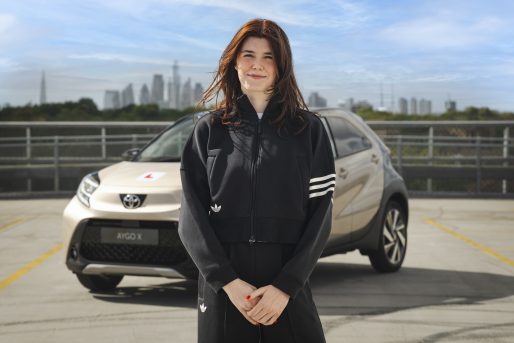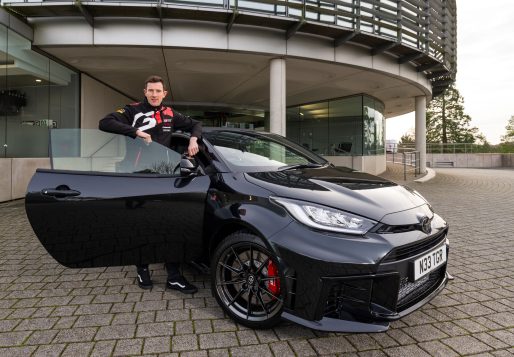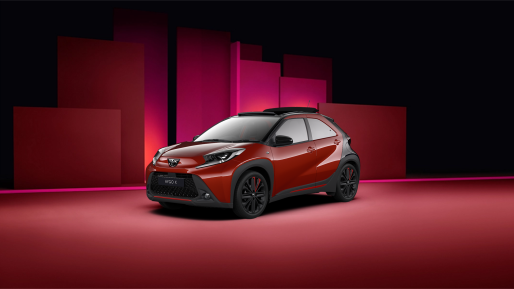The intuitive Active Lean technology of the Toyota i-Road is key to the electric concept vehicle’s sense of fun.
It provides a unique driving experience, with all the enjoyment of two-wheeler riding, exceptional manoeuvrability and a minimum turning circle of just three metres, yet with no need for the driver to keep the vehicle stable at low speeds, or when stationary.
The fact that the driver doesn’t have to put his or her feet on the road surface at any time allows i-Road to have a safer, weatherproof, closed body construction. Not only does this mean the driver doesn’t have to wear a helmet, there is a more car-like environment inside, with the opportunity to install heating, an audio system and Bluetooth.
What inspired Active Lean technology?
Akihiro Yanaka, Project General Manager Product Planning Department, says his inspiration for the Active Lean Technology came from his love of skiing.
“I thought about the basics of making things move and function properly. Then I realised the importance of maintaining an optimum relationship between the centre of gravity and the tyre/road contact points.”
“The driver and the vehicle have to move in synchronisation, so when I thought about the most natural way to experience this, I came up with skiing. I actually do find many hints from skiing.”
See also:
Wired says Toyota i-ROAD may be ‘the Perfect EV’
Toyota i-ROAD to begin French urban mobility trial
Toyota i-Road hits the streets in first public trial
Toyota i-ROAD hits the roads of Japan
World-first drive of the Toyota i-Road electric concept
How does Active Lean technology work?
Working in conjunction with rear-wheel steering and controlled by a conventional steering wheel, the system has a lean actuator motor and gearing mounted above the front suspension member and linked via a yoke to the left and right front wheels.
An ECU calculates the required angle of lean, based on steering angle, vehicle speed and information from a gyro sensor. The system automatically moves the wheels up and down, in opposite directions, and can apply a lean angle to counteract the centrifugal force of cornering.
The system also operates when i-Road is being driven straight ahead on a stepped surface, the lean actuator automatically compensating for changes in the road surface to keep the body level.





Interesting